Orzo (Risoni) Small Pasta for Soup, Salad & Baking.
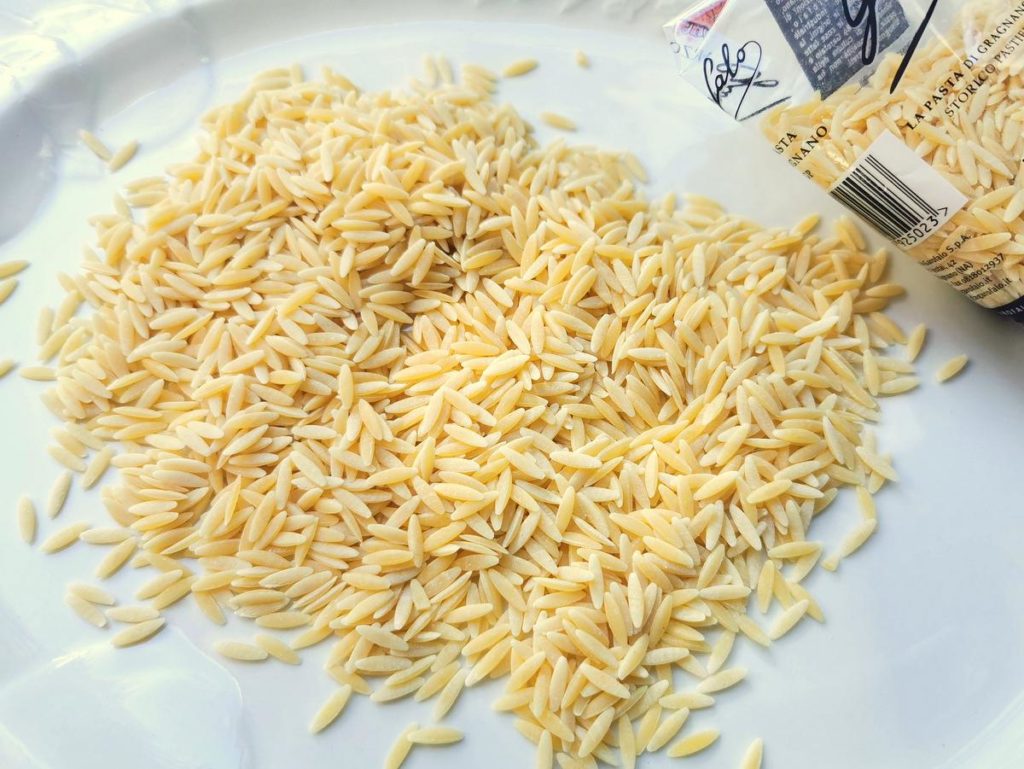
What is orzo pasta?
Orzo (also called risoni) is one of many very small types of pasta that Italians call ‘pastina’. These pastas are mostly used in soups, particularly broths and minestrone rather than creamed or pureed vegetable soups.
If you're interested in learning more about pastina have a read of my what is pastina pasta? article.
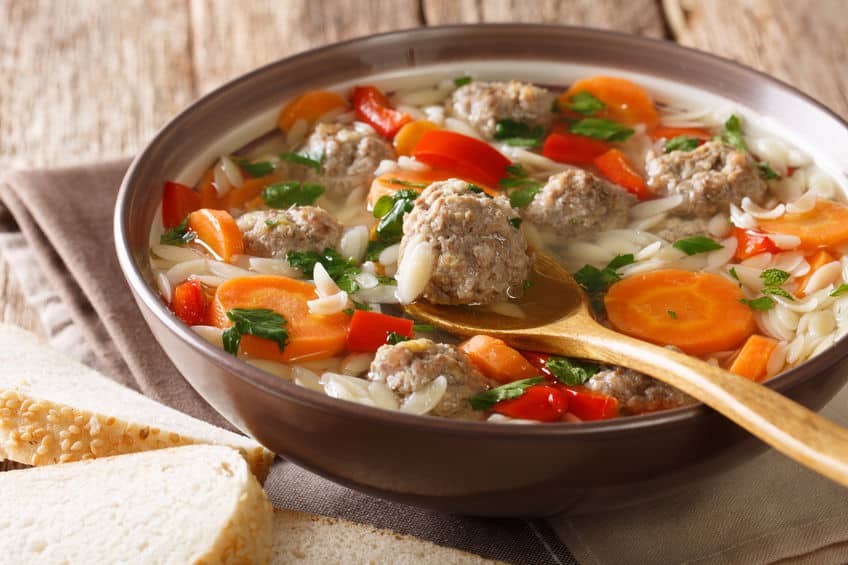
The word orzo means barley in Italian and obviously these small grains of semolina pasta are so called because they look like barley. The same goes for the word ‘risoni’ which in turn means large or big rice. Again, because this pasta also looks like grains of rice!
Orzo (risoni) around the world.
There are also types of orzo (risoni) pasta in Greek, Spanish, Turkish and Arabic cuisine. In Greece, they call this pastina kritharáki, which means little barley. There’s a well-known Greek baked ‘orzo’ dish called ‘giouvetsi’. The Greeks make it with meat (chicken, lamb or beef), orzo, tomato sauce and various spices such as allspice, cloves and even cinnamon. Although not Italian, it’s a dish I’d like to try.
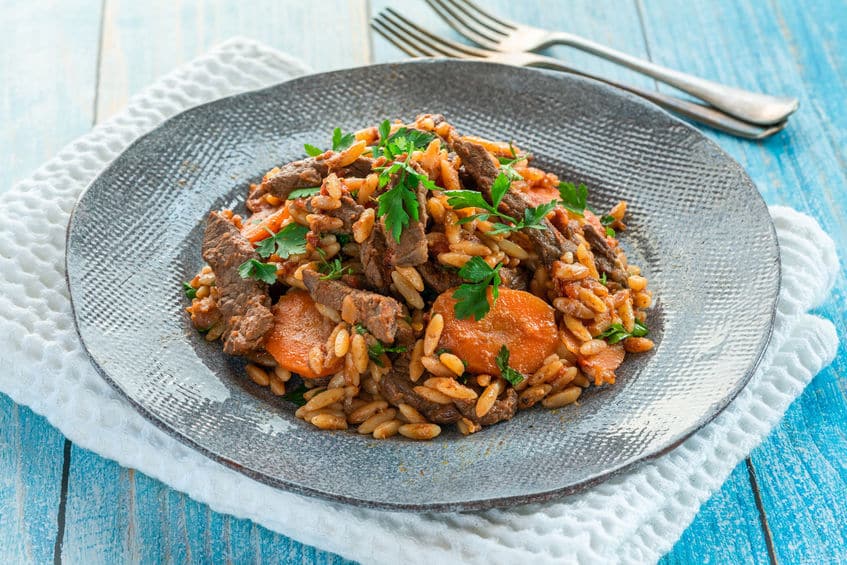
Interestingly, Israeli ptitim started life as a type of orzo (risoni). Apparently, in 1953, during a period of austerity in Israel, the Prime Minister Ben-Gurion asked the Osem food company to come up with a wheat-based substitute for rice. They invented ptitim which looked like long grain rice but was made from hard wheat flour. The only difference to orzo was that the Israelis toasted it. A bit like Sardinian fregola.
Later the company changed the shape of ptitim and made it round like large couscous. We know it as ‘Israeli couscous’. However, today in Israel, ptitim is mostly kid’s food. In fact, Osem also make star, ring and heart shaped ptitim which appeal to children! The orzo shaped version is often called Ben-Gurion rice!
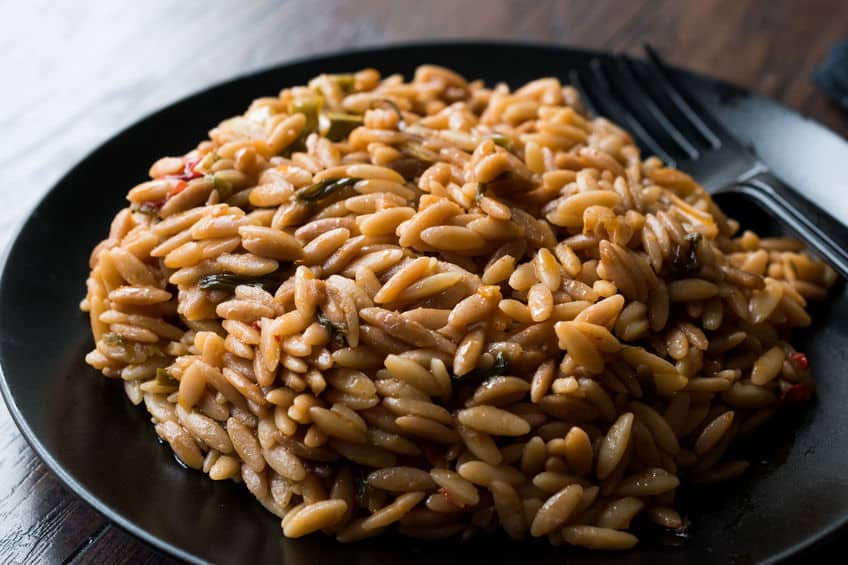
Different types of pastina.
As I mentioned above there are many types of pastina made and eaten in Italy. I think around 30 varieties! Among the most popular pastina are stelline (little stars), anellini (little rings), acini di pepe (pepper corns), semi di melone (melon seeds) and filini (little threads). Then there are puntine (which look like fruit seeds), midolline (which are shaped like drops of water) and grattini or grattoni.
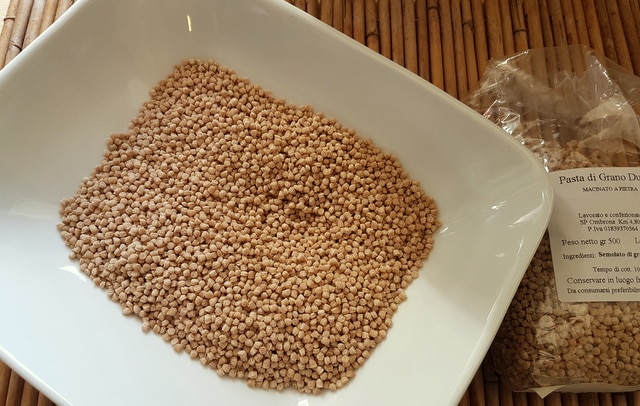
Homemade pastina.
Grattini or the larger gratoni are among the few types of pastina that were traditionally homemade. Many of the other shapes, like orzo (risoni), can only be made with a machine and are, therefore, more modern. The word grattoni or grattini comes from the Italian ‘grattugiare’ meaning to grate or reduce into small pieces. This pasta is made by grating or finely chopping pasta dough. I have even made it in a food processor! It was probably one of the first types of pastina in the Italian kitchen. You can read more about this pasta in my grattini post.
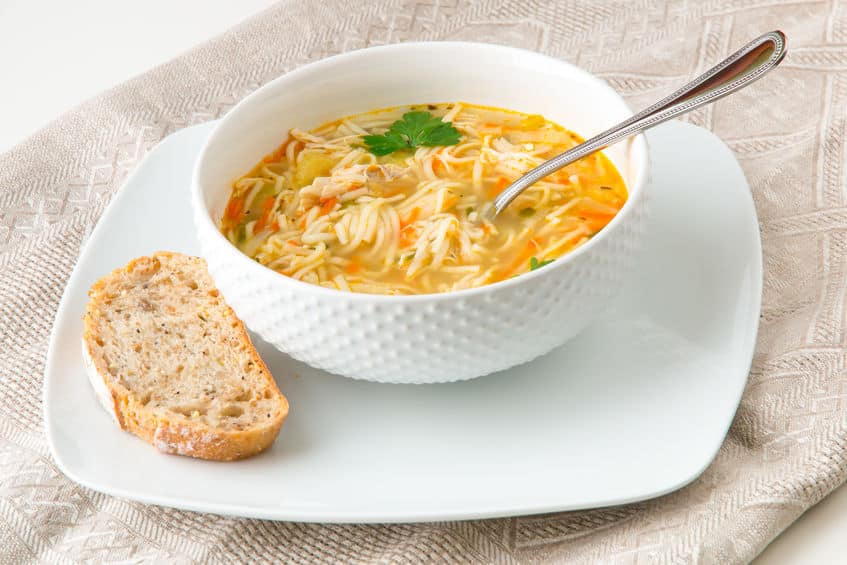
Another original type of pastina is filini. Although you can buy these threads of pasta ready cut, this is actually the same as broken fine spaghetti. There are a number of traditional soup or broth recipes that Italian add broken spaghetti to. Think chicken noodle soup!
Buying orzo (risoni) and other types of pastina.
Nearly all Italian pasta companies make orzo (risoni) or other types of pastina. Some makes include egg and some are made with whole-wheat flour. Some companies call it orzo, others risoni. I read that calling it risoni is more popular in Italy. But, I’m not sure if that is true. I have bought this pasta from Garofalo, pasta makers from Gragnano, and they label it as orzo! And, the company Rummo sell it as semi di orzo, meaning barley seeds!
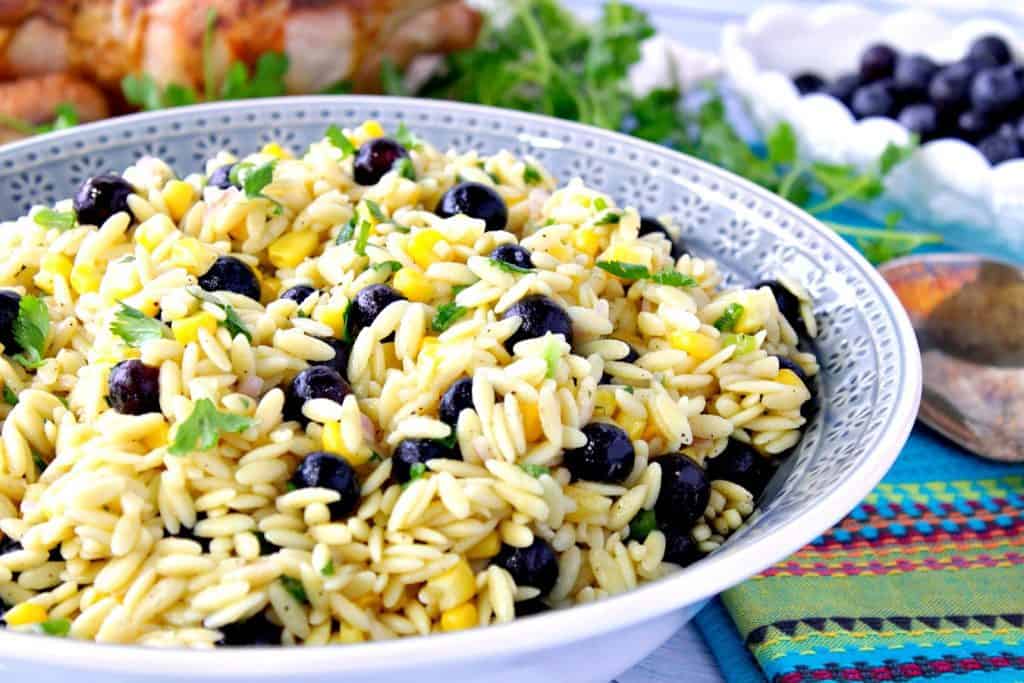
Orzo (risoni) in recipes.
In Italy, orzo (risoni) is not only found in soups but also salads. Many Italians also cook it risotto-style as a faster- cooking stand-in for rice or make baked pasta dishes with it. Plus, it’s also very popular as an ingredient in recipes for young children. Many Italian kids grow up eating orzo (risoni) meals.
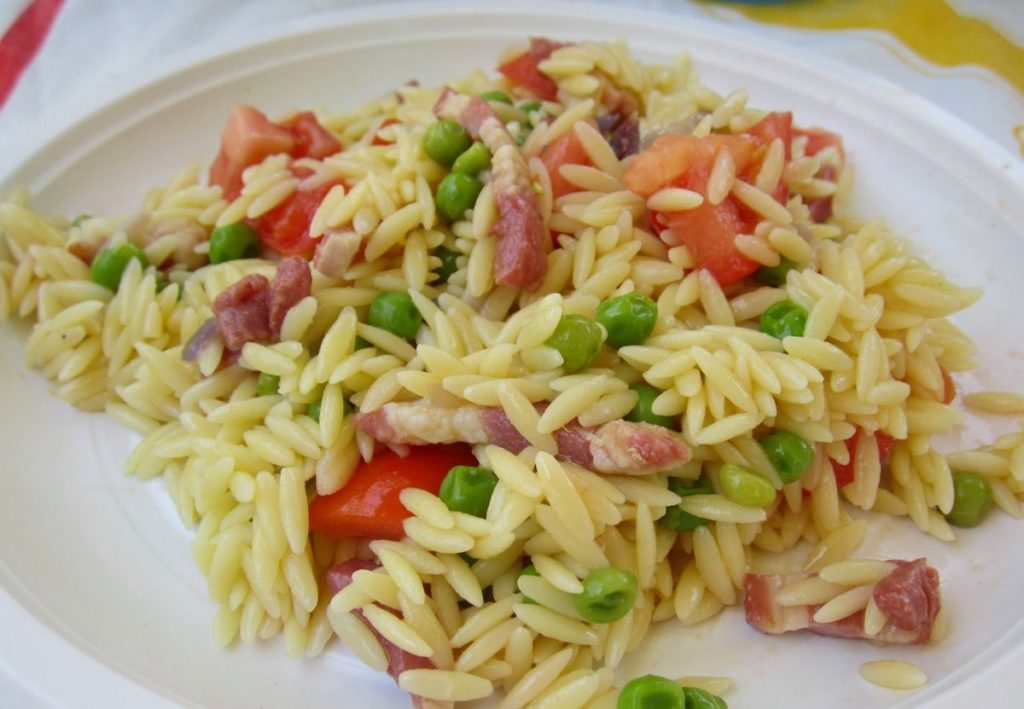
One risoni recipe for kids that comes to mind is with fresh tomatoes. To make this simple recipe you need to peel and deseed fresh tomatoes, then liquidize them. The result is a fresh tomato passata in which you cook the orzo(risoni) pasta risotto style! But, you can also use ready-made passata for this recipe.
Although most Italian adults don’t eat pastina with vegetable puree soups, most parents do give it to young kids. There are even ready-made meals by baby food companies like Plasmon for young kids (6 months to 1 year +) available to buy. Italians call these meals/dishes ‘pappa e pastina’! Of course they’re not just made with orzo (risoni) but with other types of pastina too.
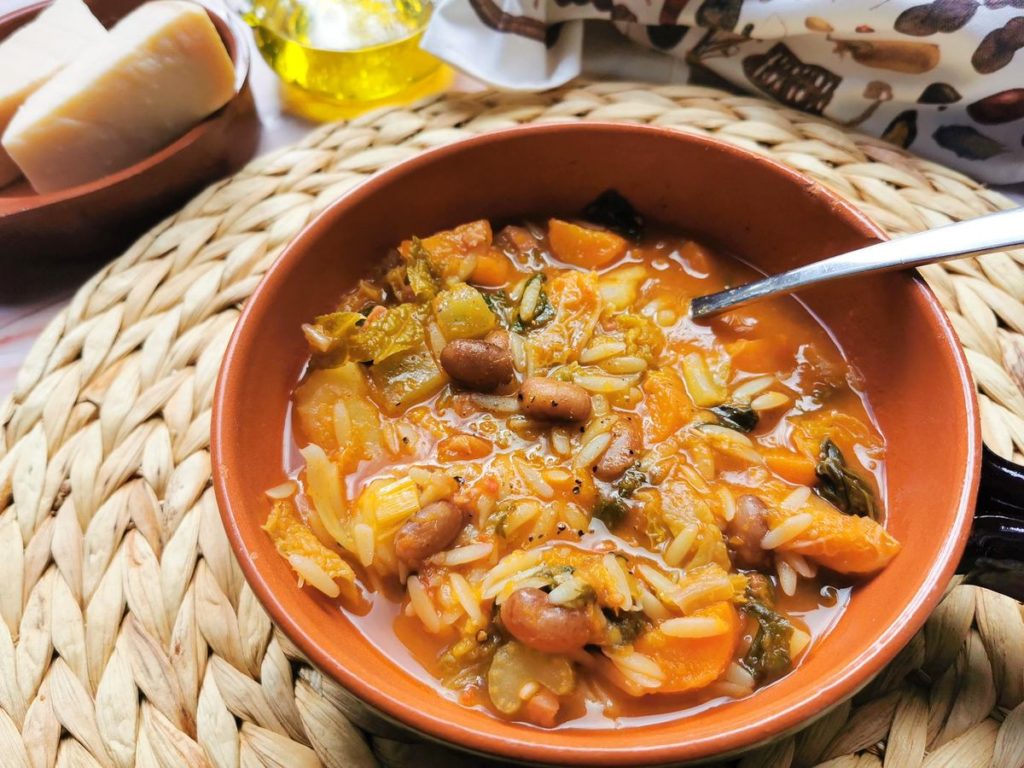
What children and adults both enjoy is pastina in brodo (broth). This isn’t just an everyday dish, but it’s also the go-to-recipe for when Italians are feeling under the weather. In Italy, it’s the definition of ‘comfort food’. The broth can be chicken, beef or vegetable and the pastina any of the varieties available or homemade.
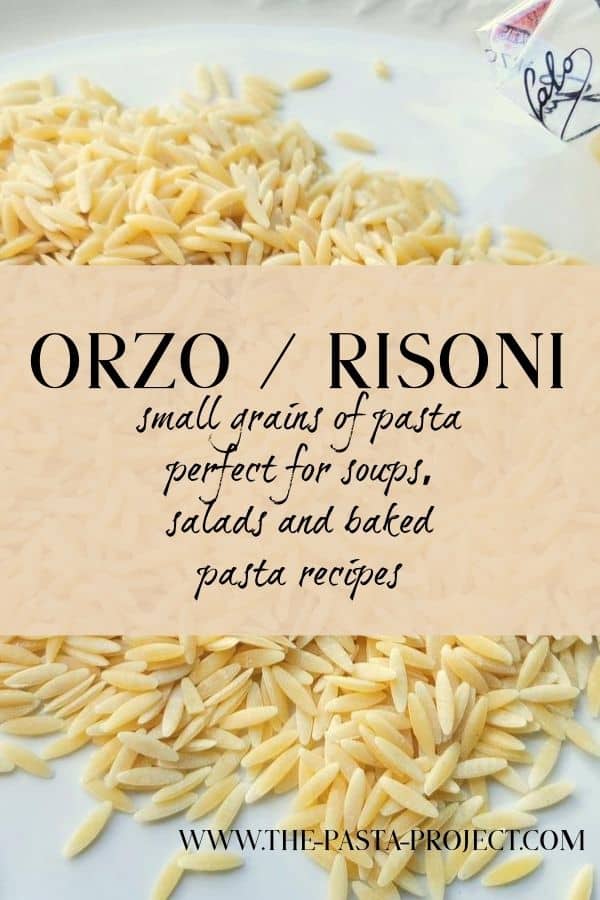
Minestra and minestrone.
Italians also refer to broths that have pieces of meat or vegetable in them as ‘minestra’. These soups often include types of pastina such as orzo (risoni). Some of these soups are also called minestrone. However, minestrone are richer soups with a ‘soffrito’ base (fried carrots, onions and celery).
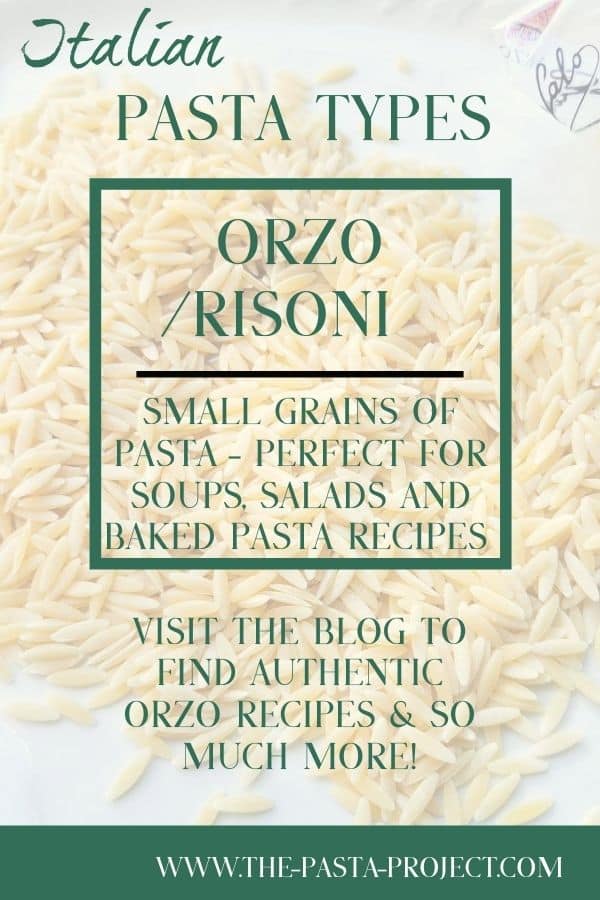
The first orzo (risoni) recipe I have posted here on The Pasta Project is a Tuscan minestrone. This traditional Tuscan recipe includes seasonal veggies and beans as well as pasta. It’s often eaten with larger pasta forms such as ditalini. However, it’s very good with pastina too.
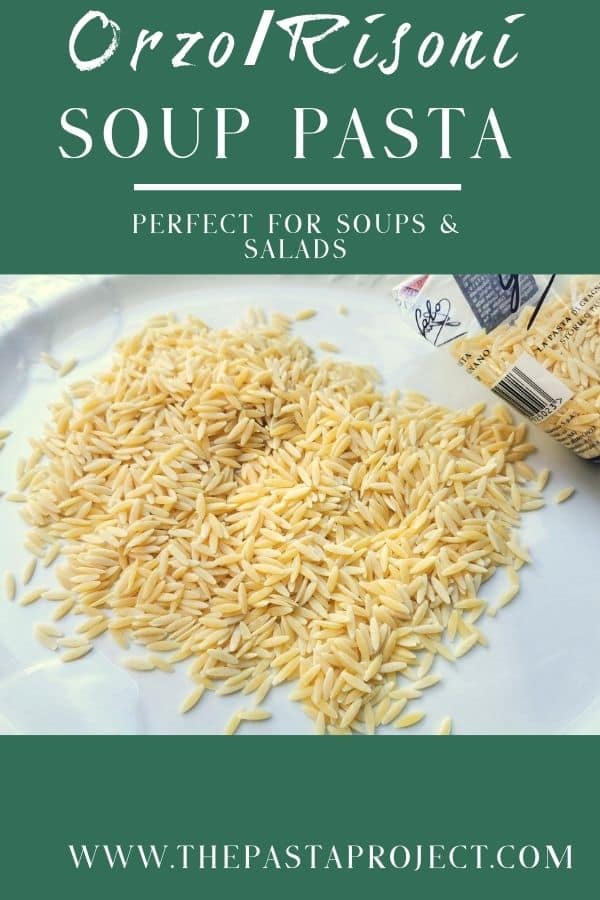
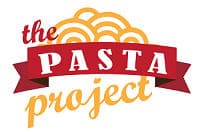

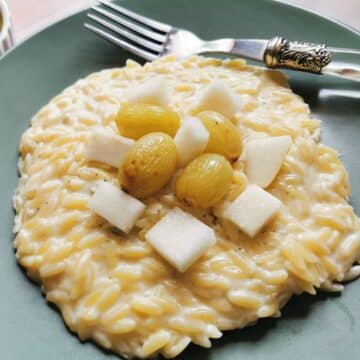
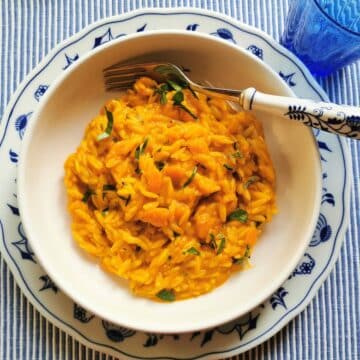
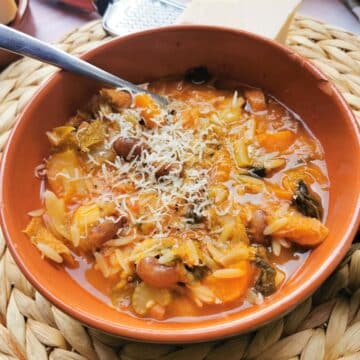
Tell us what you think